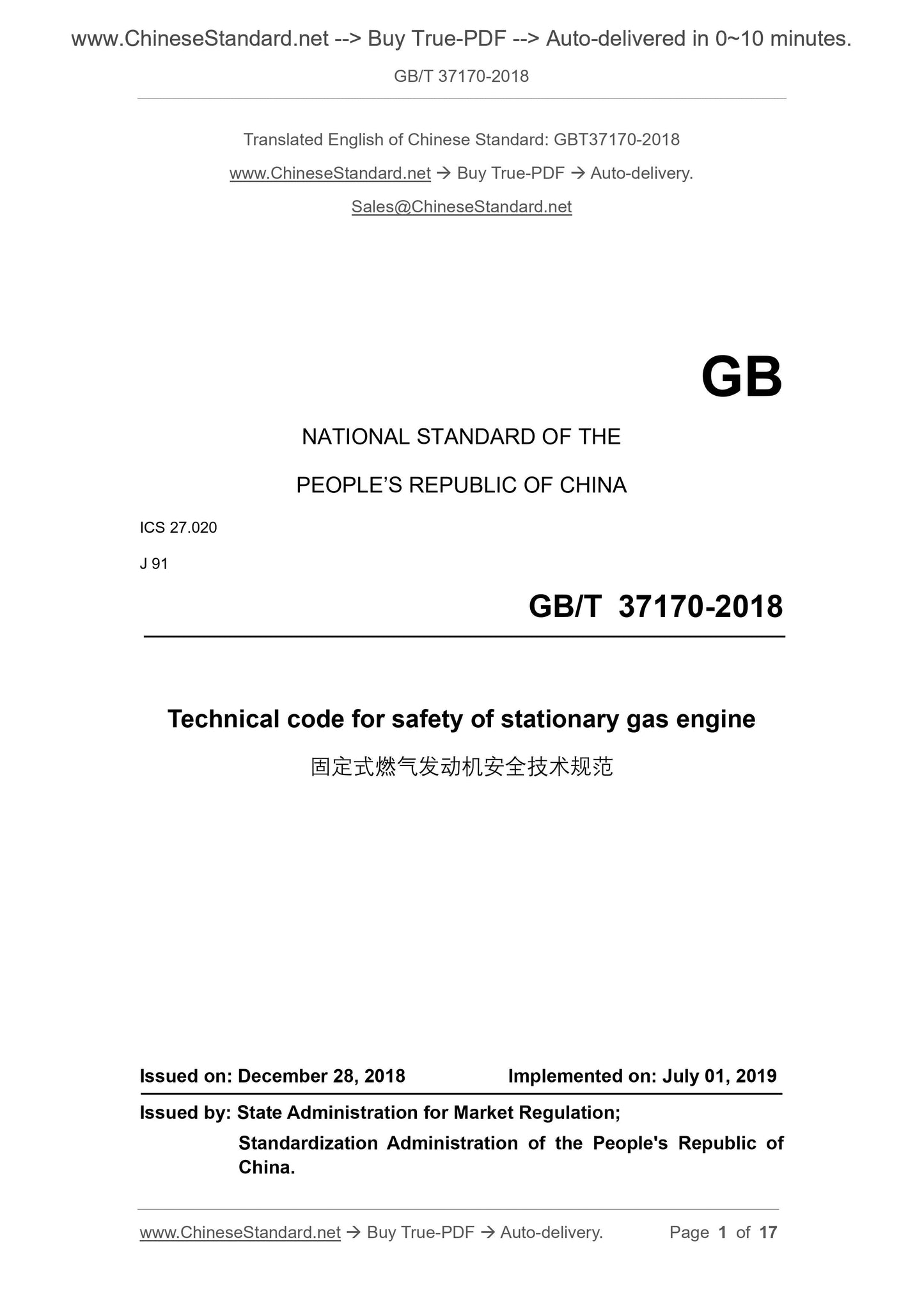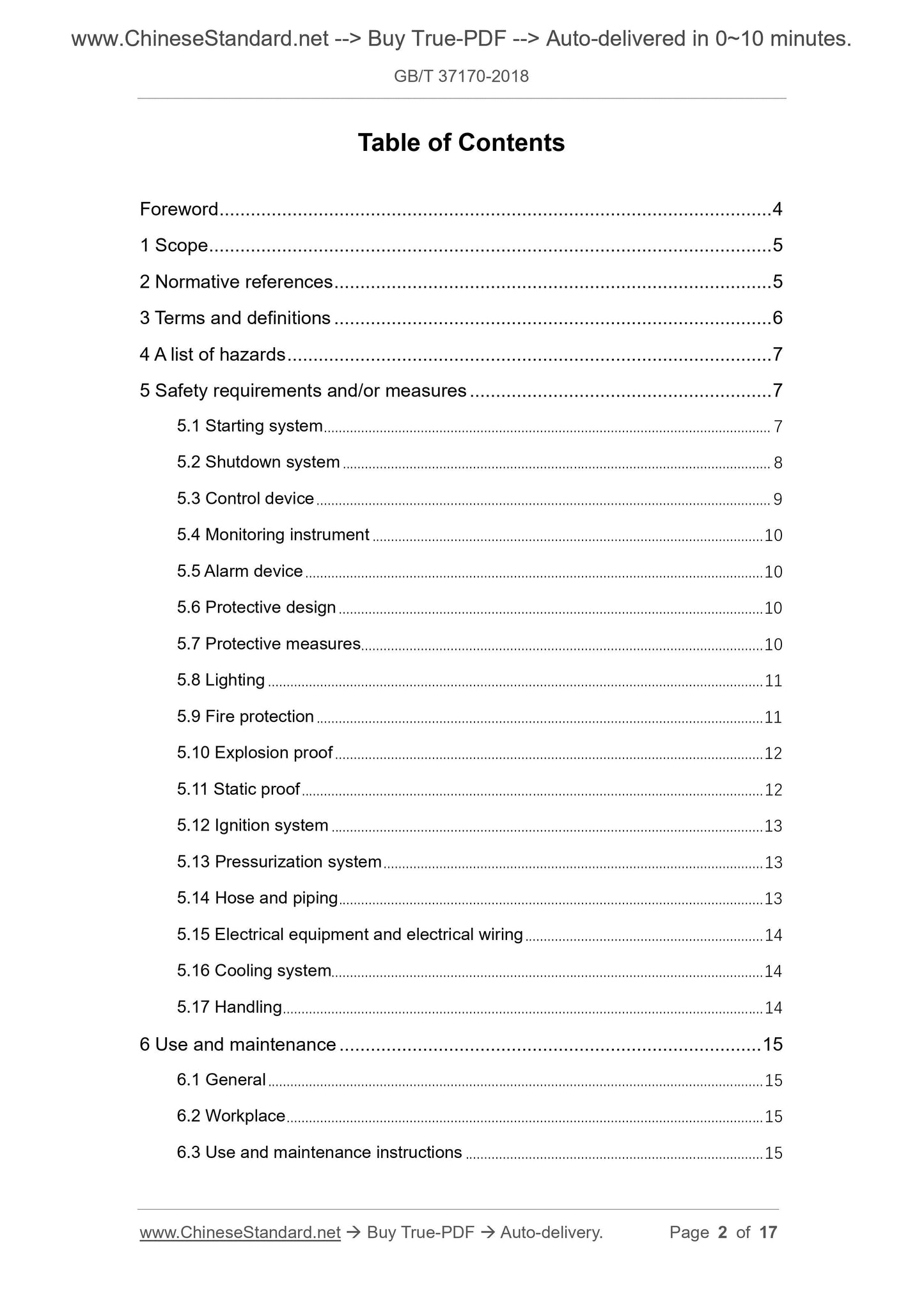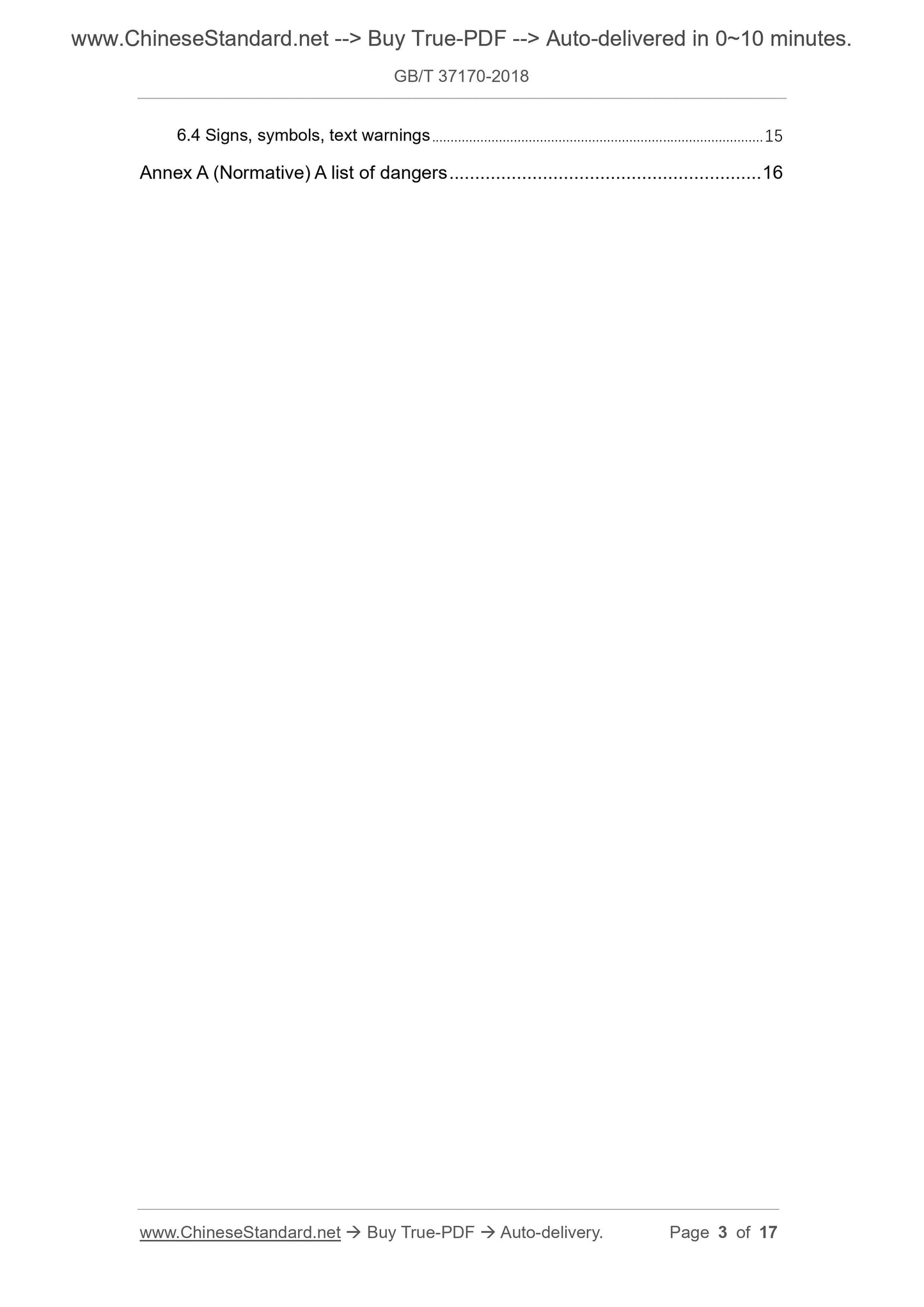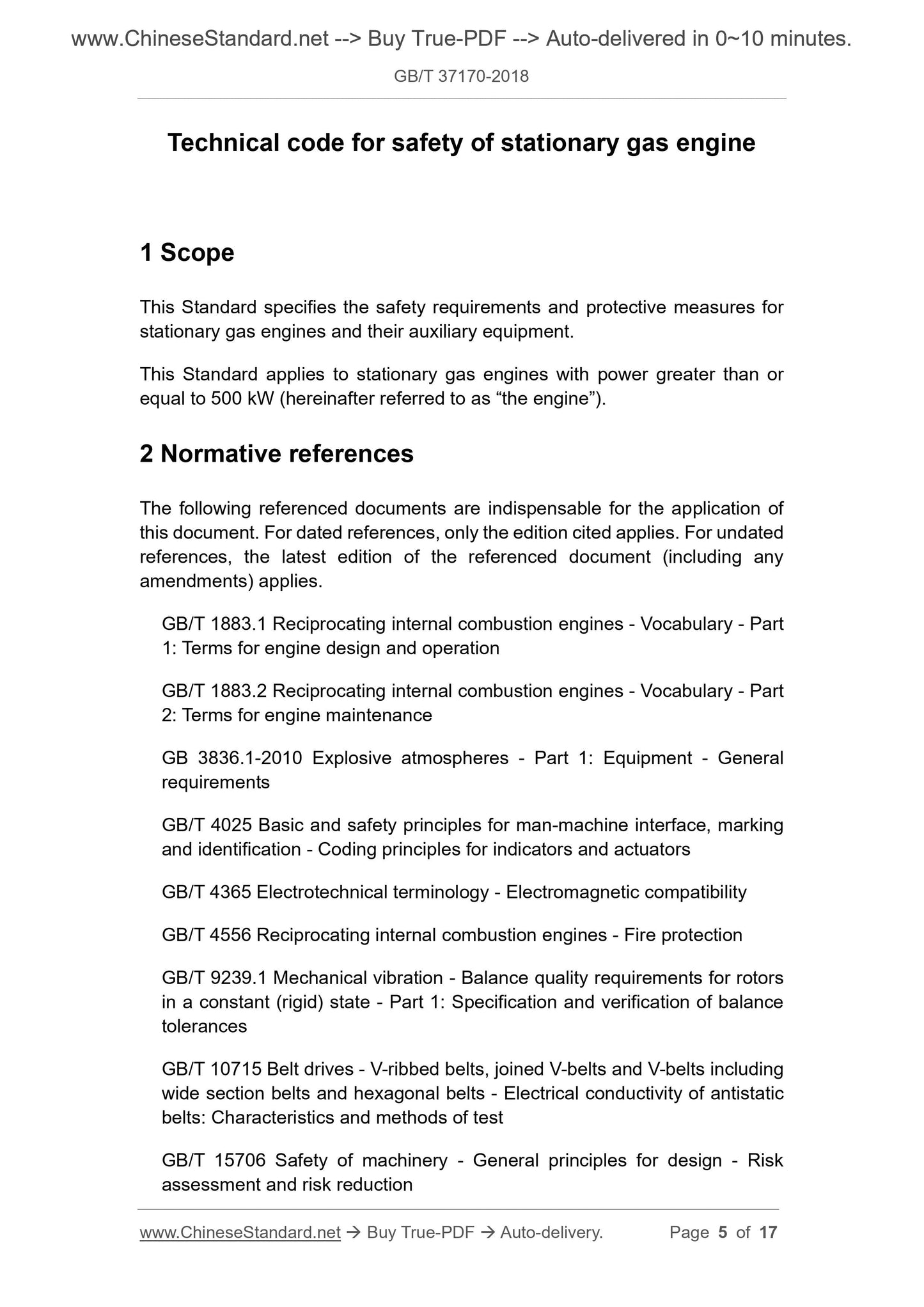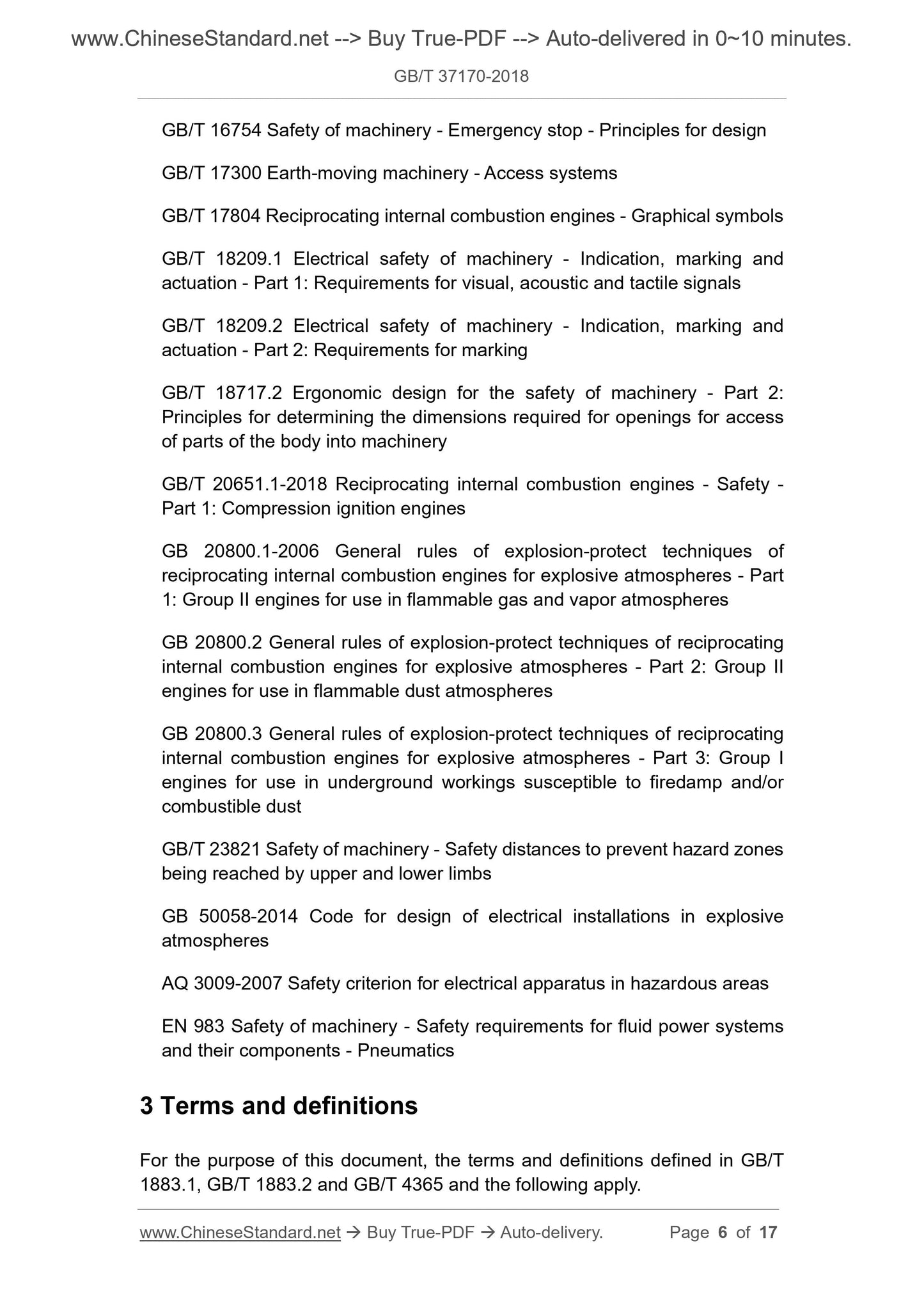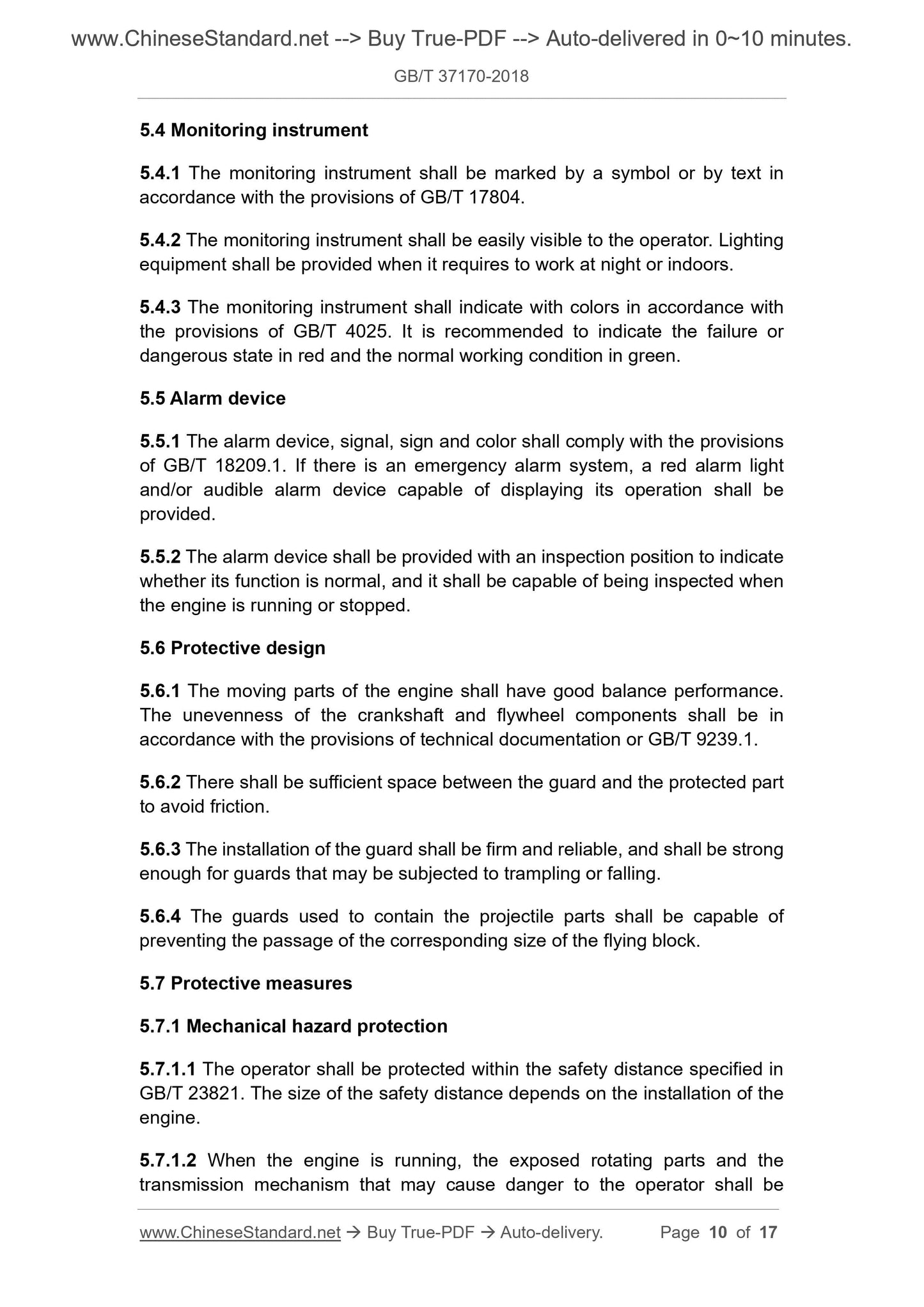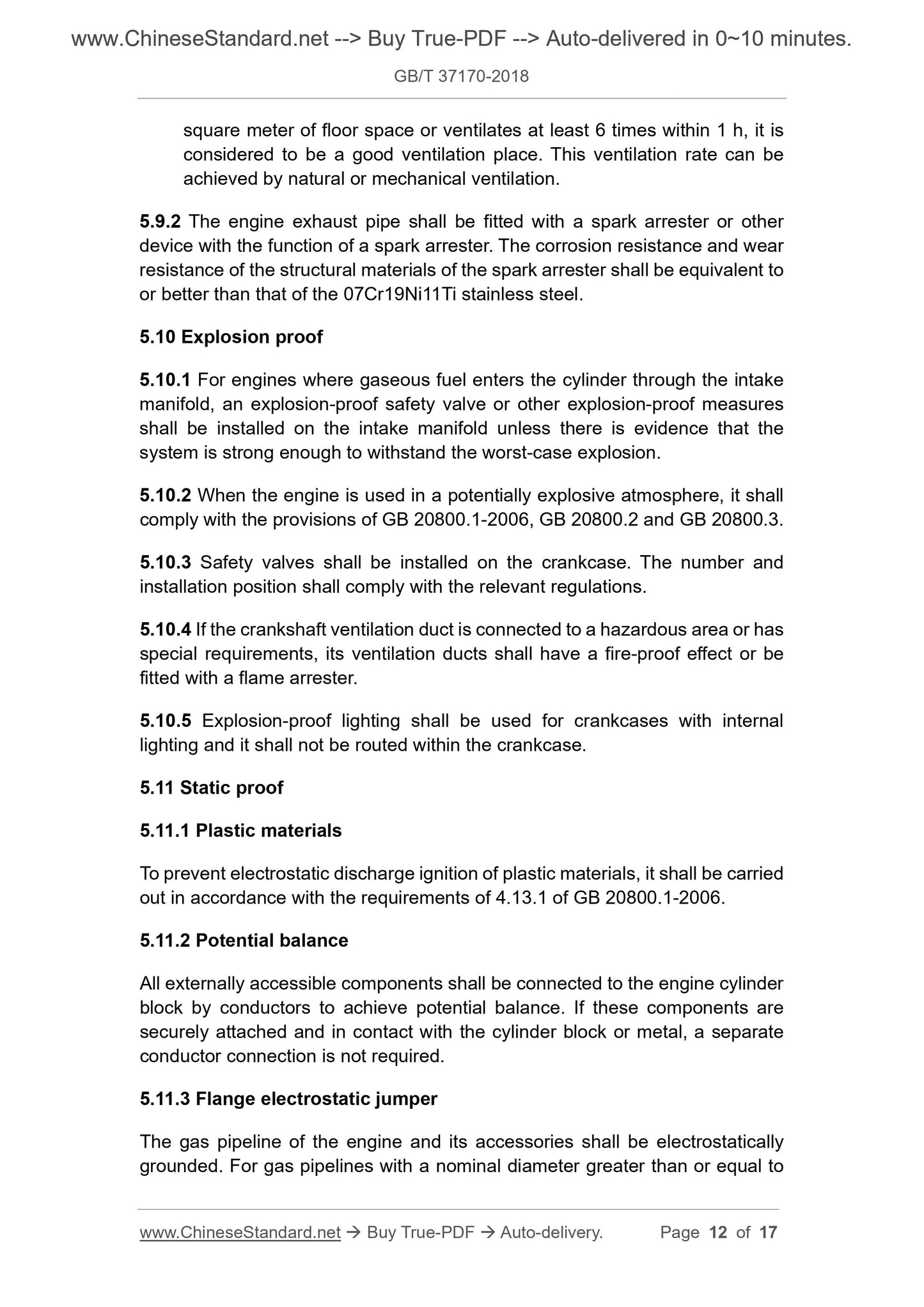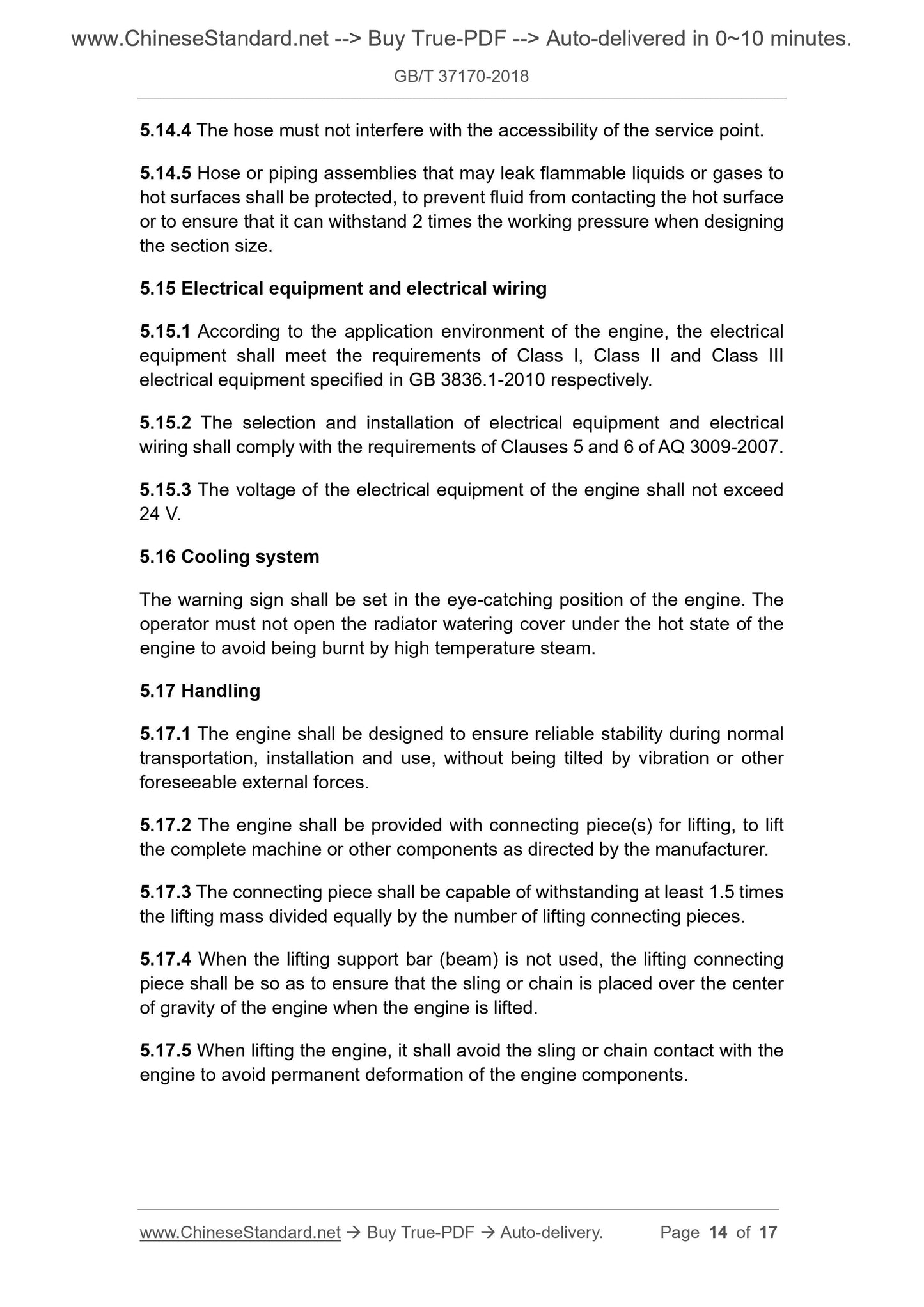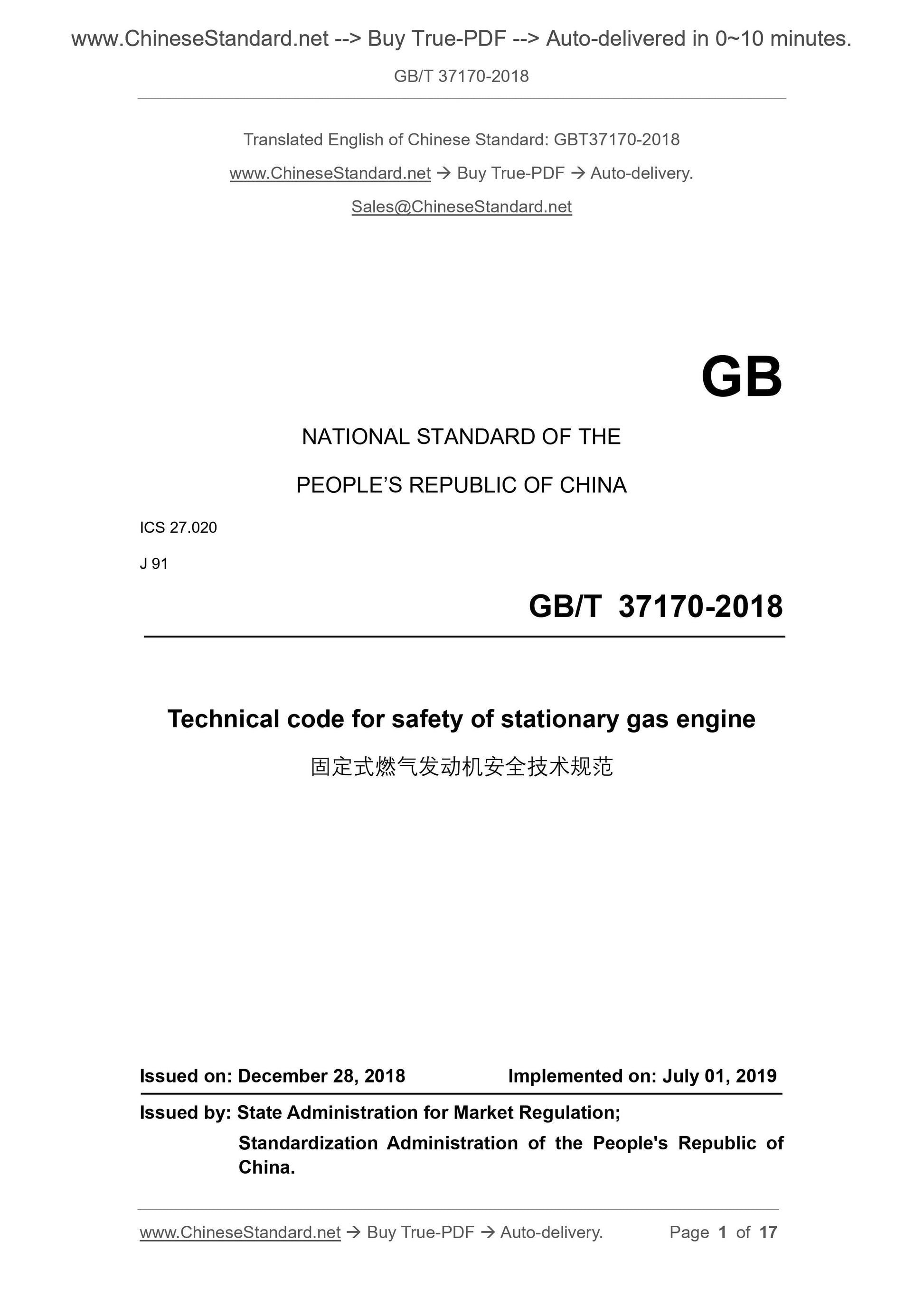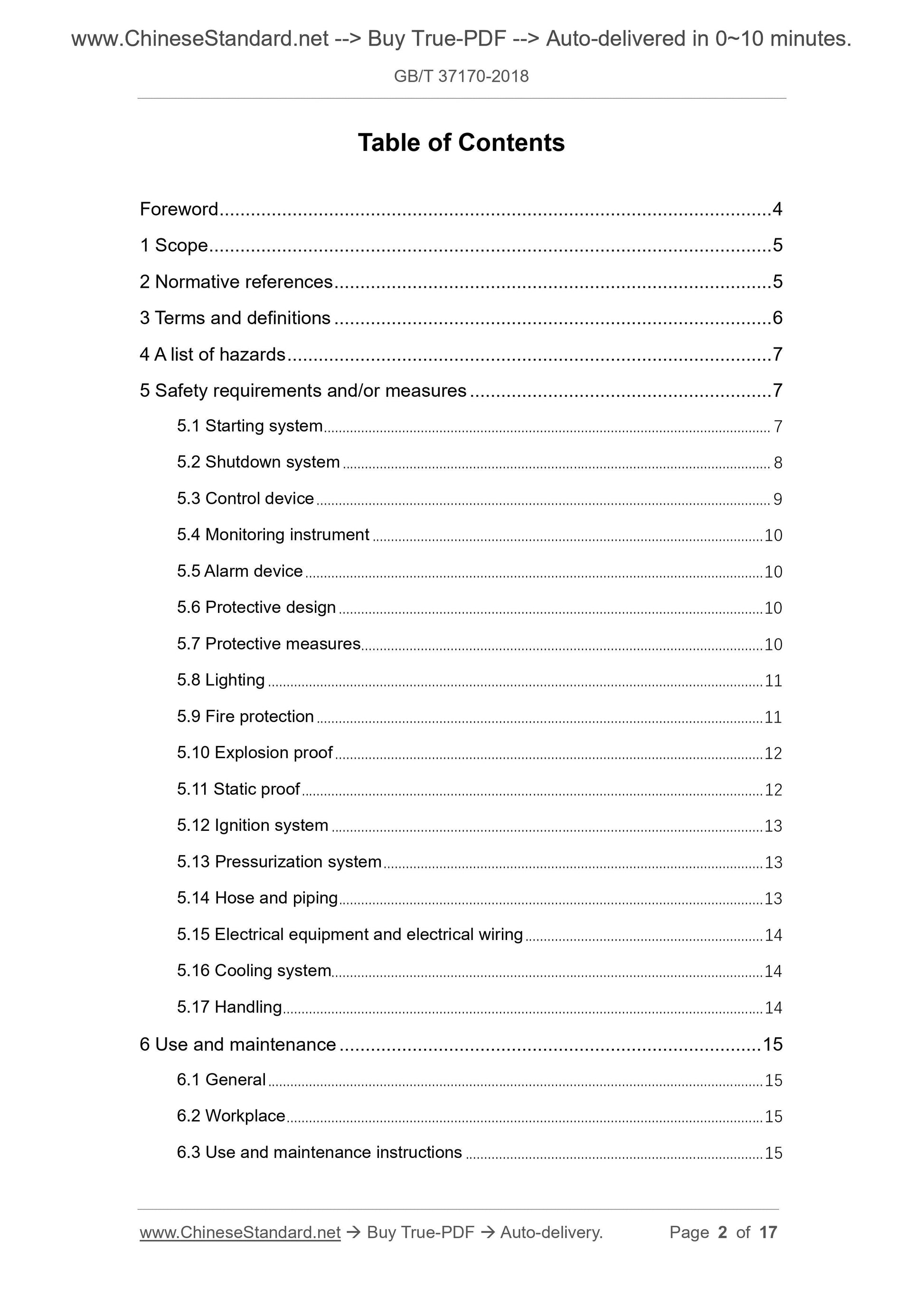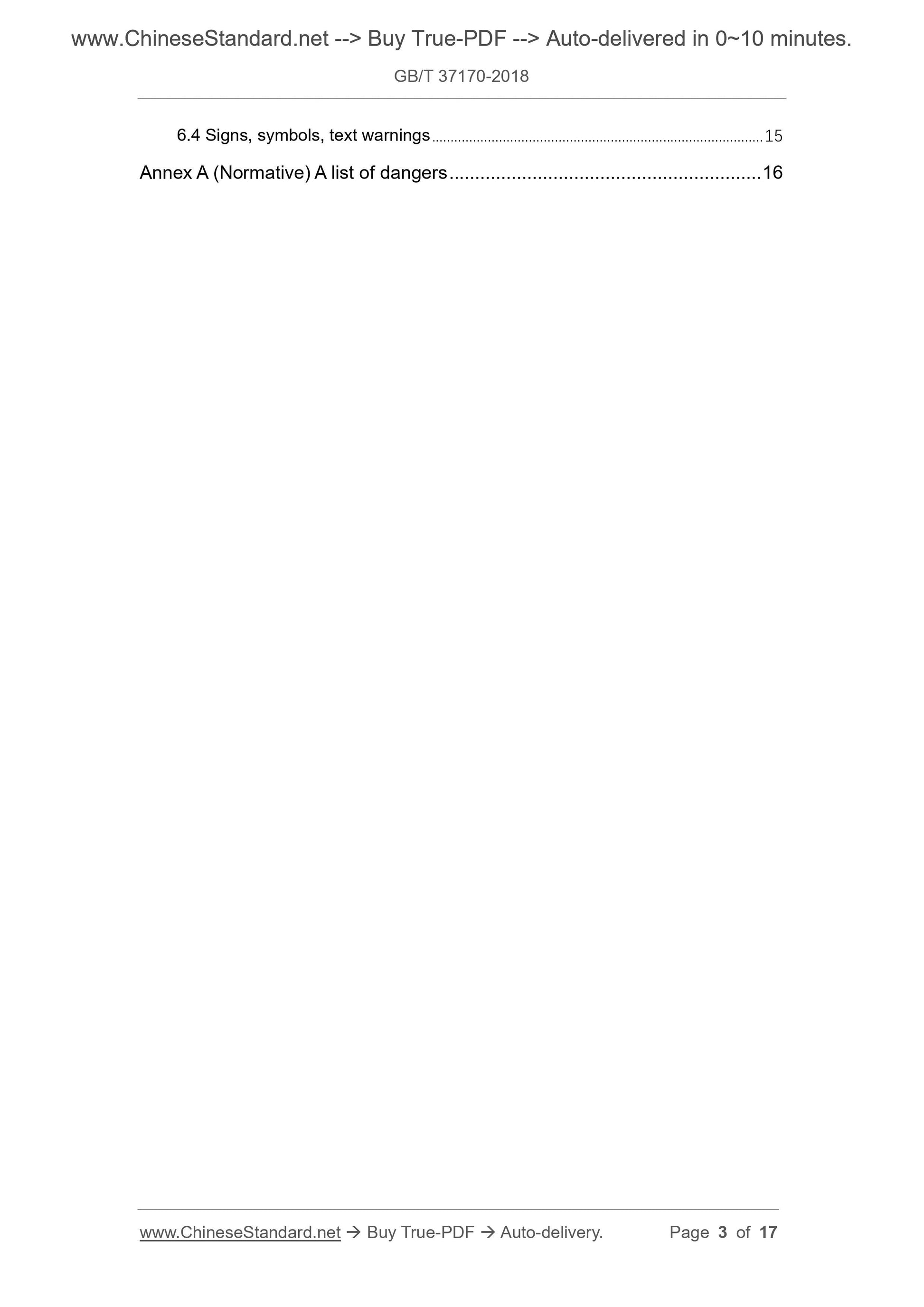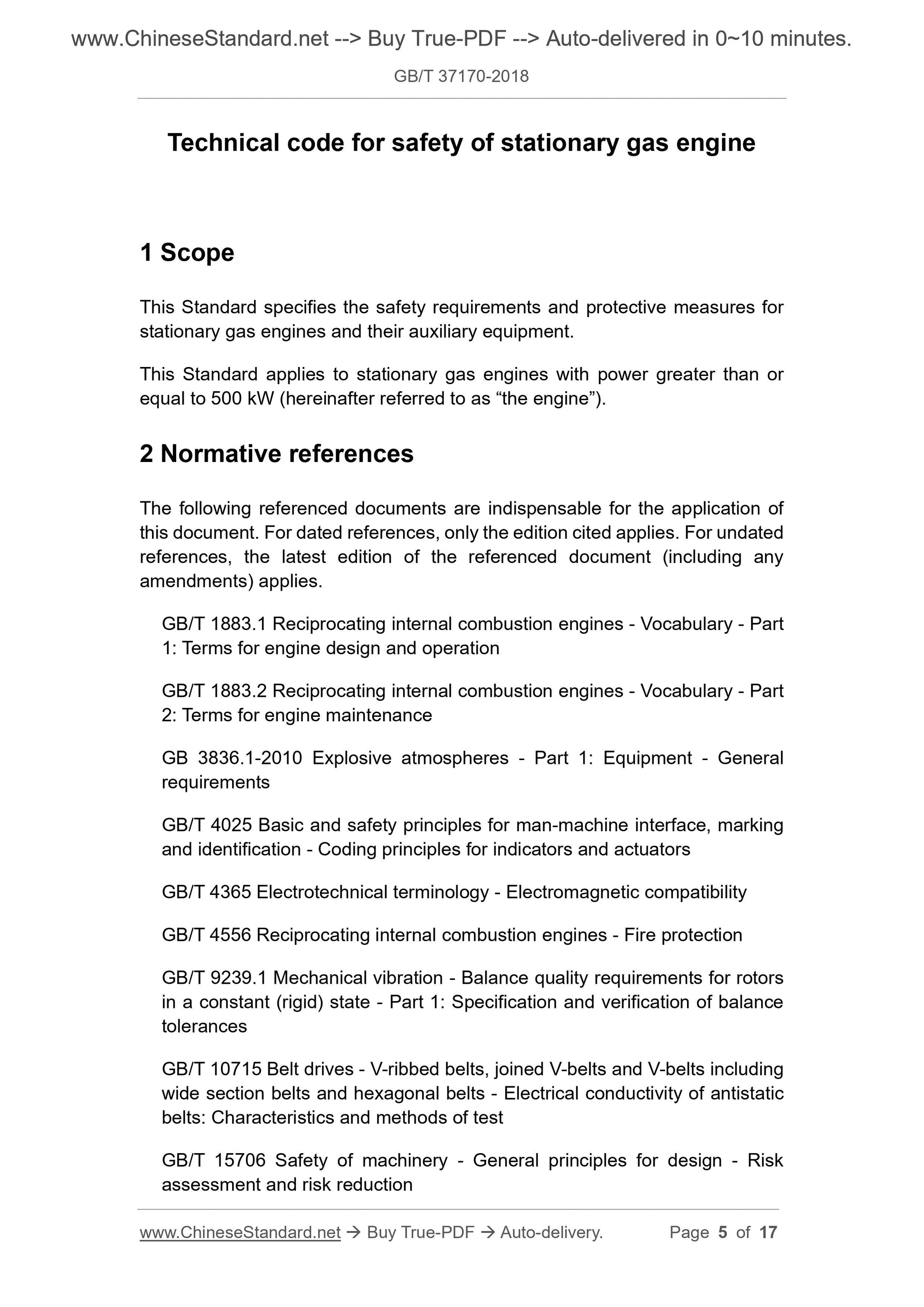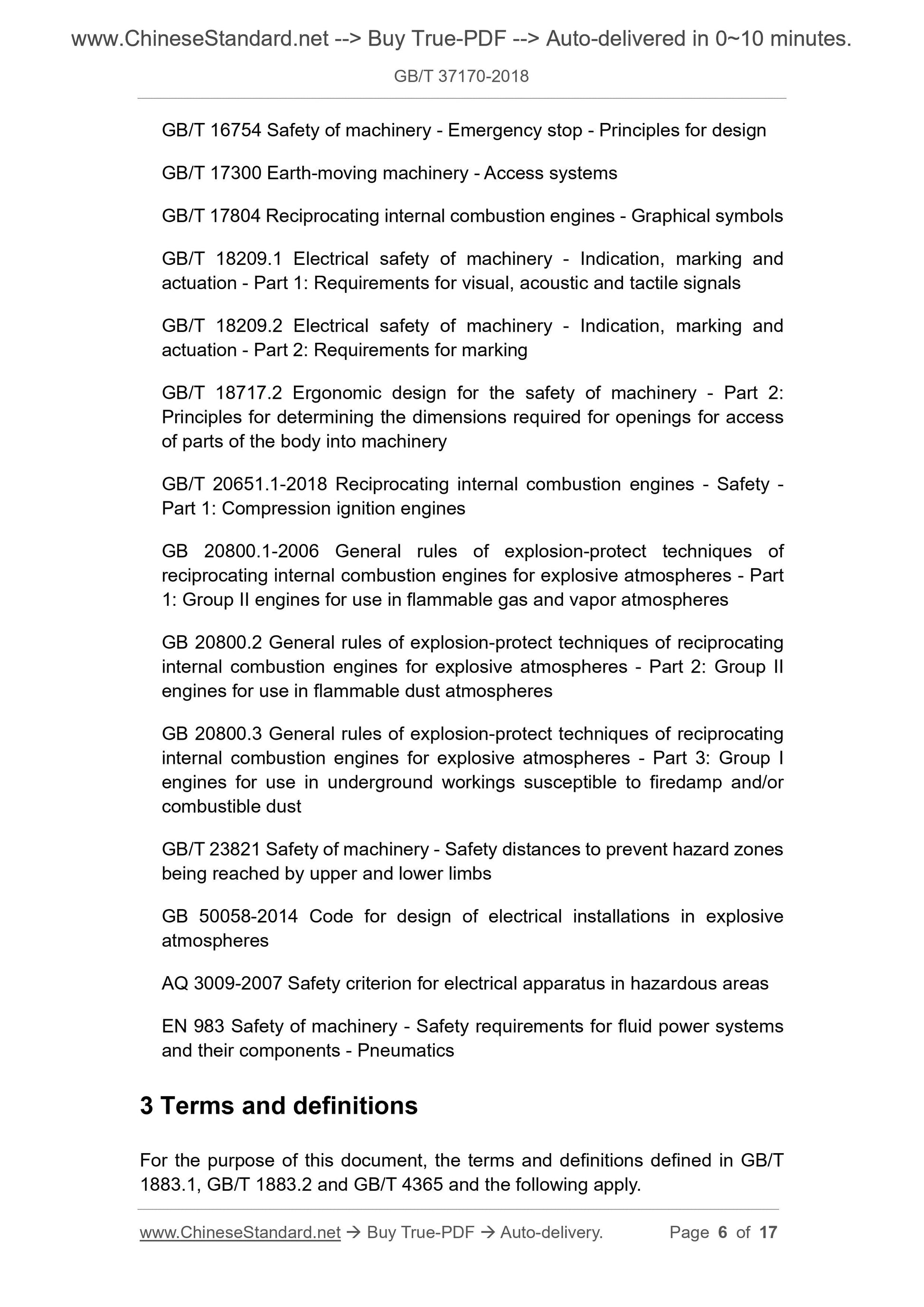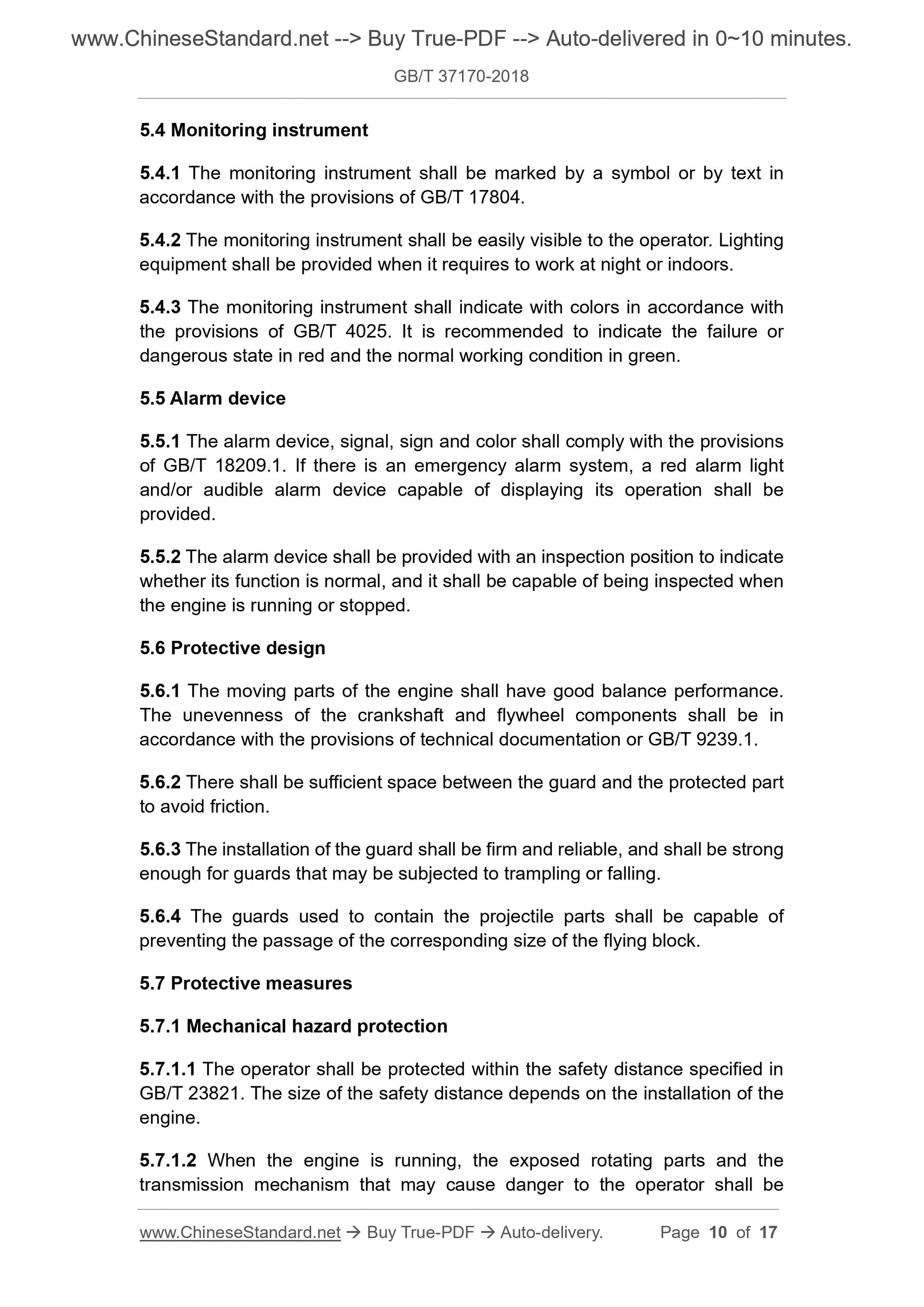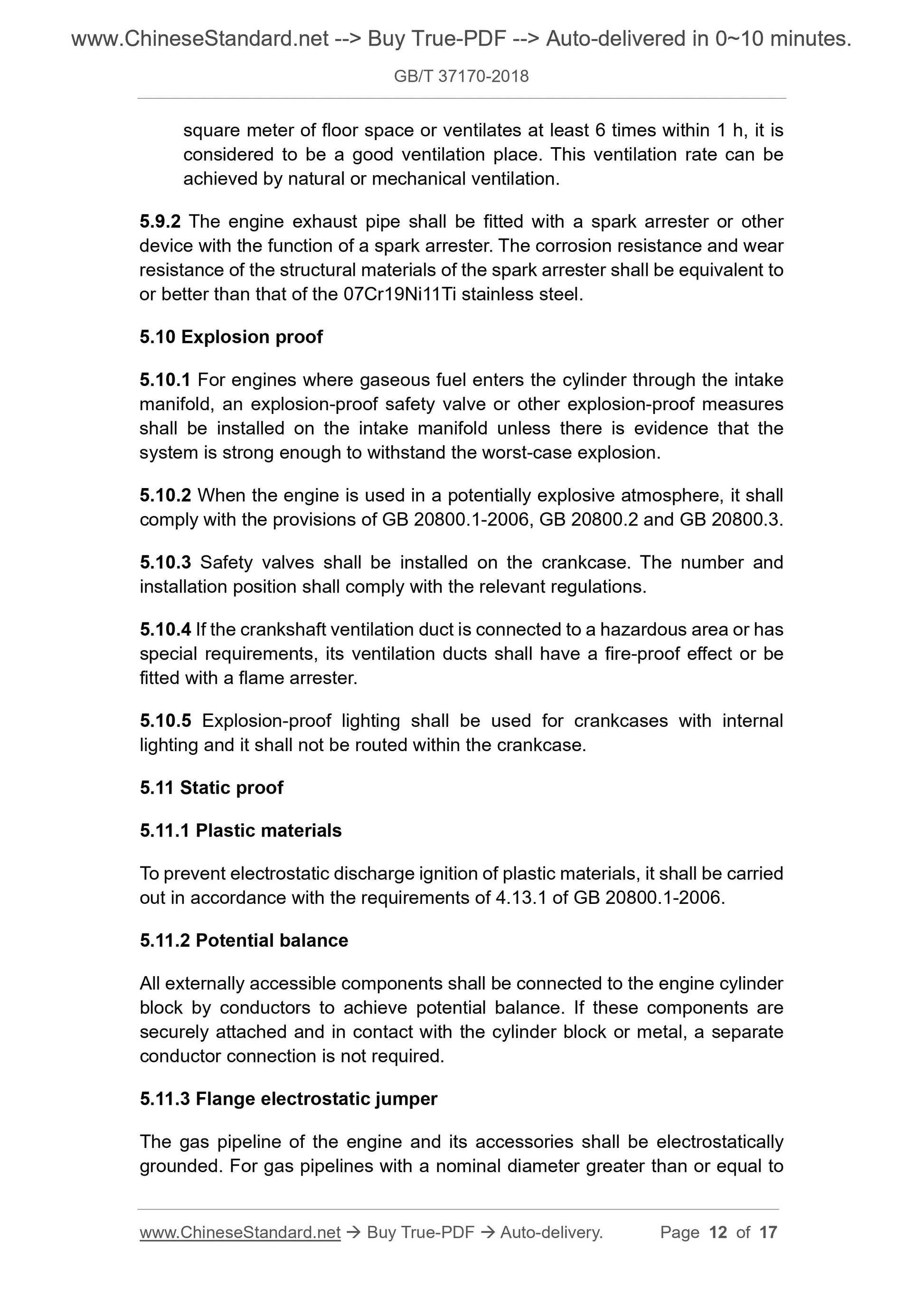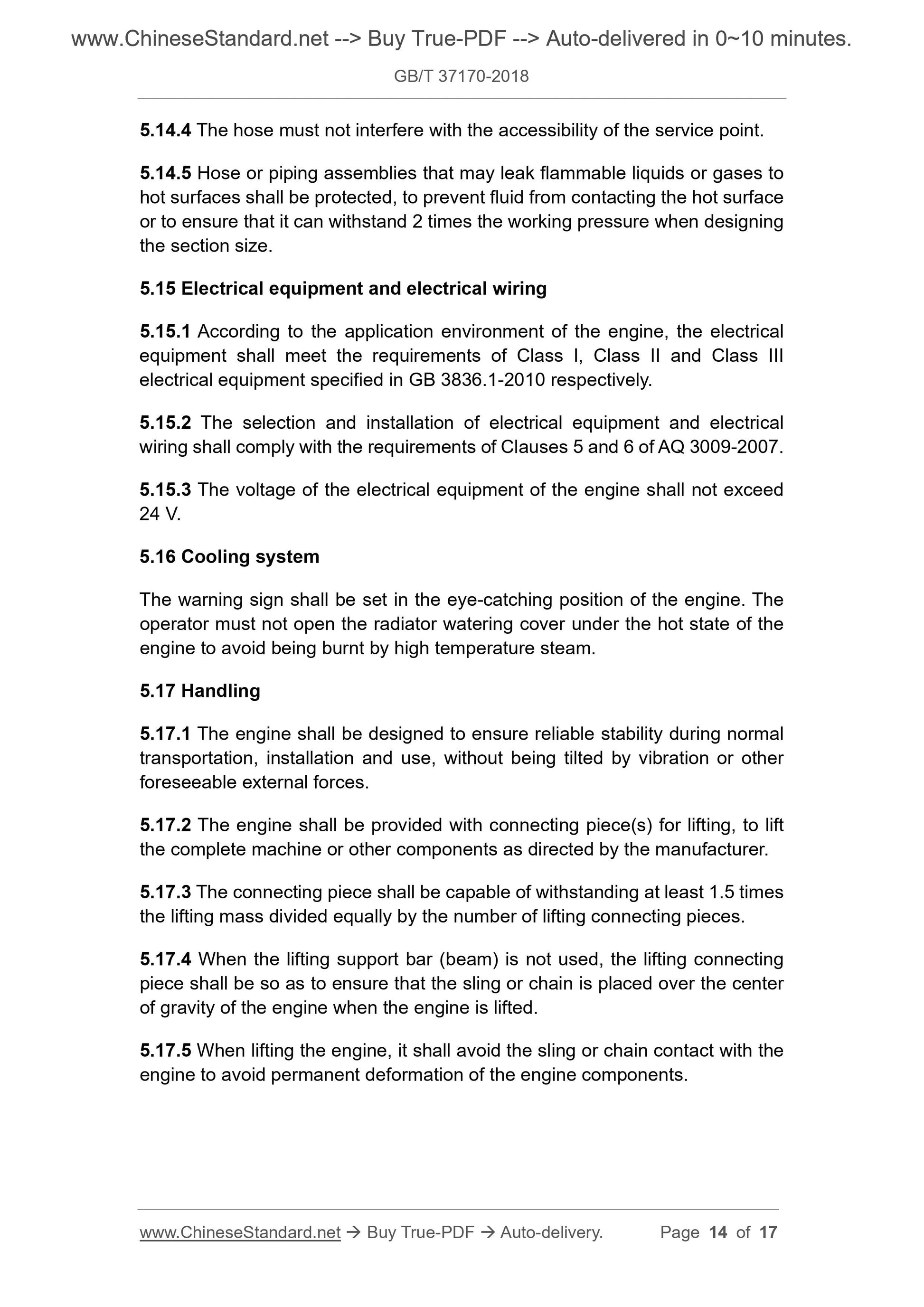1
/
of
8
www.ChineseStandard.us -- Field Test Asia Pte. Ltd.
GB/T 37170-2018 English PDF (GB/T37170-2018)
GB/T 37170-2018 English PDF (GB/T37170-2018)
Regular price
$150.00
Regular price
Sale price
$150.00
Unit price
/
per
Shipping calculated at checkout.
Couldn't load pickup availability
GB/T 37170-2018: Technical code for safety of stationary gas engine
Delivery: 9 seconds. Download (and Email) true-PDF + Invoice.Get Quotation: Click GB/T 37170-2018 (Self-service in 1-minute)
Newer / historical versions: GB/T 37170-2018
Preview True-PDF
Scope
This Standard specifies the safety requirements and protective measures forstationary gas engines and their auxiliary equipment.
This Standard applies to stationary gas engines with power greater than or
equal to 500 kW (hereinafter referred to as “the engine”).
Basic Data
| Standard ID | GB/T 37170-2018 (GB/T37170-2018) |
| Description (Translated English) | Technical code for safety of stationary gas engine |
| Sector / Industry | National Standard (Recommended) |
| Classification of Chinese Standard | J91 |
| Classification of International Standard | 27.020 |
| Word Count Estimation | 14,112 |
| Date of Issue | 2018-12-28 |
| Date of Implementation | 2019-07-01 |
| Issuing agency(ies) | State Administration for Market Regulation, China National Standardization Administration |
Share
